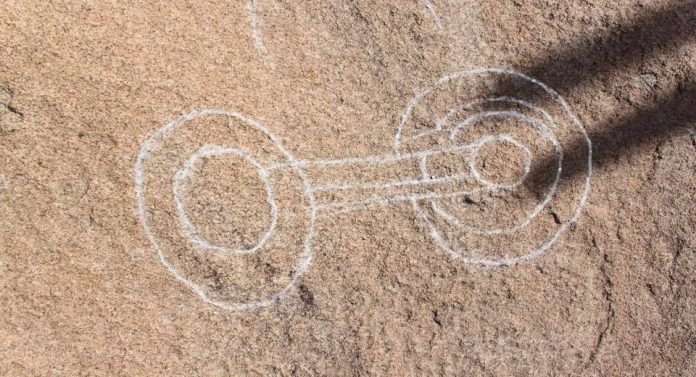Aruba is a highly demanded tourist destination with a fragile ecosystem on a very small piece of earth, but it has thousands of years of human history and millions in geological terms. Our native heritage teaches us to love and respect our roots, and our greatest desire is to protect and preserve them. Here is where the objective of this blog comes to mind: educating our readers about Aruba’s cultural heritage.
In this episode, we want to create consciousness about “rock art” sites and, to some extent, be guardians of them. Although efforts have been made in the past to educate the inhabitants to participate in its conservation, it is also necessary to take into account that the rock art is located in the open air and is not only exposed to the effects of weather but also to human vandalism.
Contrary to popular beliefs, rock art was not created by cannibal inhabitants of the mythical epoch; it does not reflect buried treasure maps, nor was it meant to scare away demons or evil spirits. The pre-historic artist had the goal in mind of informing, creating beliefs, and handing over knowledge. Communication abilities were valuable in trade and commerce, and rock art was also a way of telling stories and archiving them for future generations’ use. Changes in rock art styles often reflect new ideologies and/or religious practices.
In total, 301 pictographs (including 3 petroglyphs) have been found on Aruba. Of course, one drawing can be as little as a point or line that may be meant as a separate drawing by the ancient artist. Still, by counting every separate representation that everybody would call a drawing, one reaches a total of approximately 270 to 331 separate drawing representations over 17 sites.
While petroglyphs are carved or pecked into an exposed rock surface, pictographs are painted onto those surfaces. Petroglyphs are less common than pictographs. Pecking into the rock to create petroglyphs was accomplished with a hammer stone or stone chisel. Different pecking techniques create different styles. Incising or scratching with a sharp tool was also practiced. Incised designs are more expressive and detailed than pecked designs.
Pictographs are usually created on light-colored, protected from the elements, granite, quartz diorite, or limestone surfaces, such as cave walls and cave ceilings. Stylized animals, humans, and geometric object designs are common subjects. Pictograph pigments and binders were probably obtained from soot, vegetal pigments, blood, or pulverized minerals. The colors generally used were red, orange, white, and black. Red pigment probably came from hematite or iron oxide; orange from a combination of hematite, ocher, limonite, lichen, or Brazil wood.
The official native rock artist was often a mystical healer, herbal blender, and color creator, but probably because of his power to heal and commune with the supernatural, he inspired creativity in himself. They were undoubtedly a continuation of the first surviving shaman migrations through Bering more than twenty thousand years ago, and in our native language they are well known as “curiosos.”
A long time ago, in Aruba, it was common to consult the curious about certain cures. The central concept or approach is based on the trust of those who seek healing. Through art, shamans can summon good spirits to help restore parts of the soul. Art is good, and in this specific case, rock art, it does not heal or repair; it helps to restore the soul. Today, shamanic healing is part of a holistic system.
Different studies show the multiple benefits of artistic practices, such as strengthening self-esteem and self-confidence, reducing stress and anxiety, enhancing our memory, and improving concentration.
Now, if you love to know everything about Aruba, do something off the “tourist grid” and surprise yourself by visiting Etnia Nativa, a private residential museum and unique place that introduces you to an authentic glimpse of the island’s native cultural heritage.
Since 1994, Etnia Nativa has been the home of Anthony, a native artist and “Island-Insight” blogger who guides each visitor through resplendent collections from his family heritage dating back to 1640, when the Dutch occupation began. Visit it and feel the true native effect!
R.S.V.P. WhatsApp +297 592 2702 or mail etnianativa03@gmail.com.




















